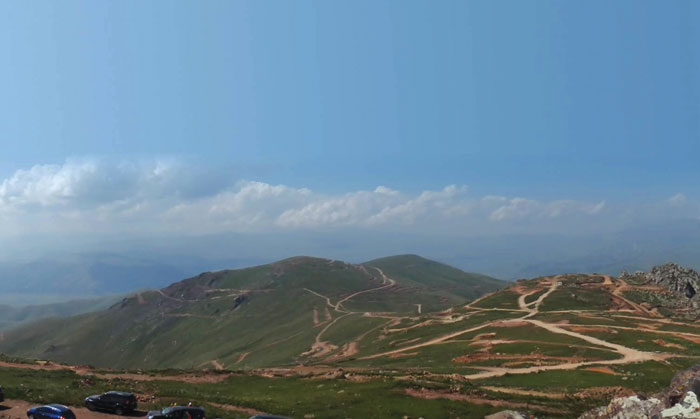Last year was another tough year for gold companies, with the spot metal price sliding 10% to finish 2015 at US$1,061 per oz. While some miners thrived in the low gold price environment, others collapsed, with more than a few voluntarily delisting their stock. Like always, some companies held on, despite wiping out much of their market value.
Rubicon Minerals (TSX: RMX; US-OTC: RBYCF) plunged 89.3%, losing a buck to exit 2015 at 12¢ per share. In November, it temporarily suspended underground mining at its Phoenix gold deposit in Ontario’s Red Lake district and dismissed 310 workers, or 87% of its staff. The junior explained that it discovered Phoenix’s F2 gold deposit was more “geologically complex” than it thought. Consequently, it stopped operations to improve its 2013 geological model, develop a resource estimate and implement a plan.
On Jan. 11, the firm noted that its revised geological model and updated resource estimate reduced tonnes, grade and gold ounces at F2, making it suspend all work related to the implementation plan. The deposit has an estimated 413,000 oz., compared to 3.3 million oz. previously. The stock collapsed on the recent news to 5¢ in mid-day trading.
The junior expects to take a huge impairment in its year-end 2015 financial results. It is assessing strategic alternatives, including a merger, asset sale, financing options and capital restructuring.
Timmins Gold (TSX: TMM; NYSE-MKT: TGD) shares steadily declined 83.3%, or 95¢, to exit the year at 19¢ per share. On Nov. 2, Timmins said it would stop mining the San Francisco heap-leach gold mine in Mexico’s Sonora state in mid-2016, instead of 2022, due to low gold prices. Heap-leach operations should continue until early 2017. It will need a gold price of higher than US$1,300 per oz. to consider restarting its sole mine.
Other major events in 2015 include replacing former CEO Bruce Bragagnolo with Mark Backens in October; buying Goldcorp’s (TSX: G; NYSE: GG) processing plant and infrastructure to cut development costs at its Ana Paula gold project; and closing the $140-million acquisition of Newstrike Capital for Ana Paula.
Timmins expects a feasibility study for Ana Paula by mid-2016, with BMO analyst Brian Quast saying the project’s key hurdle would be financing. He has a speculative “underperform” rating on the stock.
Buenaventura (NYSE: BVN), Peru’s largest publicly traded precious metals company, fell US$5.28, or 55.2%, to finish at US$4.28 per share.
The company operates or owns an interest in several mines in the country, including the Orcopampa, La Zanja, Yanacocha and Coimolache gold deposits.
Sebastian Cruz, an analyst at Lima-based Kallpa Securities, notes the miner has “difficulty generating cash at current prices of gold and silver, because both metal costs exceed the current international price.”
He adds that Buenaventura’s leverage in the last quarter increased 3.5 times (measured in terms of net debt/earnings before interest, taxes, depreciation and amortization), likely making it hard to finance its upcoming Tambomayo and San Gabriel projects.
Despite this, Cruz remains bullish on the stock, with a US$9.55 target price and a “hold” rating.
Alamos Gold (TSX: AGI) lost 45.2% of its value to end 2015 at $4.55 per share, despite pushing its market cap to over $1 billion by merging with AuRico Gold and hitting its operational targets at the Young-Davidson gold mine in northern Ontario.
“Alamos has exited a transition year and we expect a better 2016,” Desjardins analyst Michael Parkin writes. He says the company will stay a relatively high-cost producer based on a “fully baked” all-in sustaining cost. Parkin estimates Alamos will produce 432,400 oz. gold this year at all-in sustaining costs of US$1,210 per equivalent oz. gold.
The analyst notes that the miner has ample cash — US$268 million at year-end 2015 — to weather the low gold price and developing its projects. Parkin has a “speculative buy” and a $6 target on the stock.
On Jan. 7, the miner closed its $28.5-million acquisition of Carlisle Goldfields to consolidate the Lynn Lake gold camp in Manitoba.
Lydian International (TSX: LYD; US-OTC: LYDIF) fell 42.6% in the past year to close 2015 at 27¢ per share, despite making headway at its fully held Amulsar gold project in Armenia.
In December, Lydian lined up a US$325-million construction and financing package for Amulsar from Orion Mine Finance and Resource Capital Funds. The package includes a US$60-million stream, an US$80-million equity raise, a US$160-million term loan and a US$25-million cost overrun facility.
A month earlier it revised Amulsar’s mine plan, bringing down anticipated start-up costs 13% to US$370 million and all-in sustaining costs down 17% to US$585 per oz., without sacrificing production.
Once up and running, the proposed decade-long mine could churn out 211,000 oz. annually.


Be the first to comment on "The biggest gold losers in 2015"